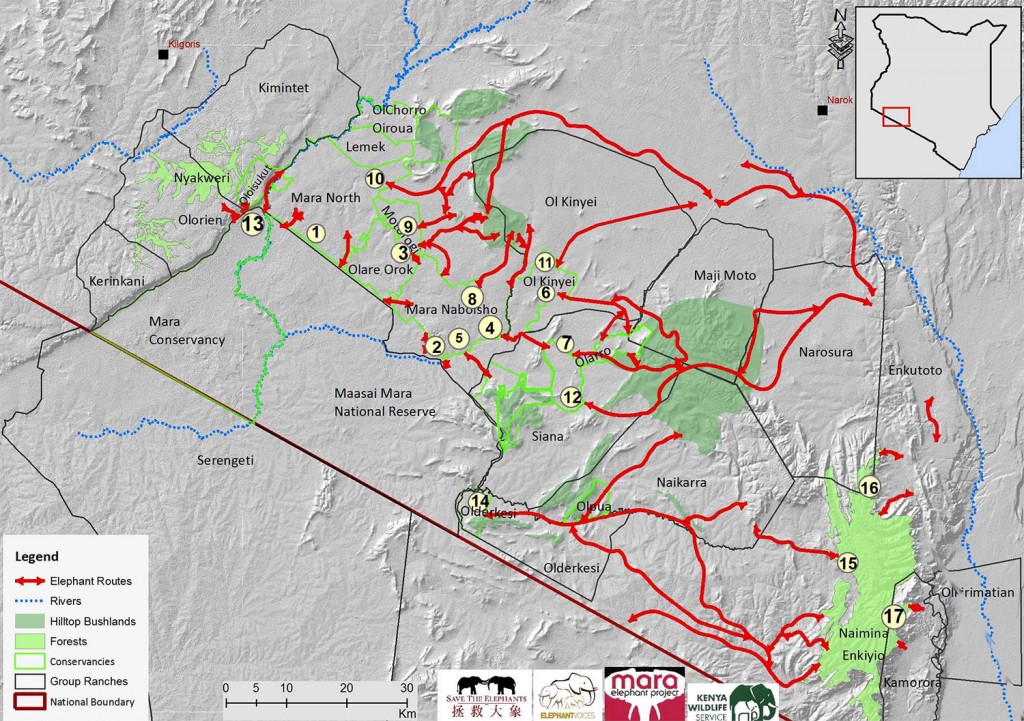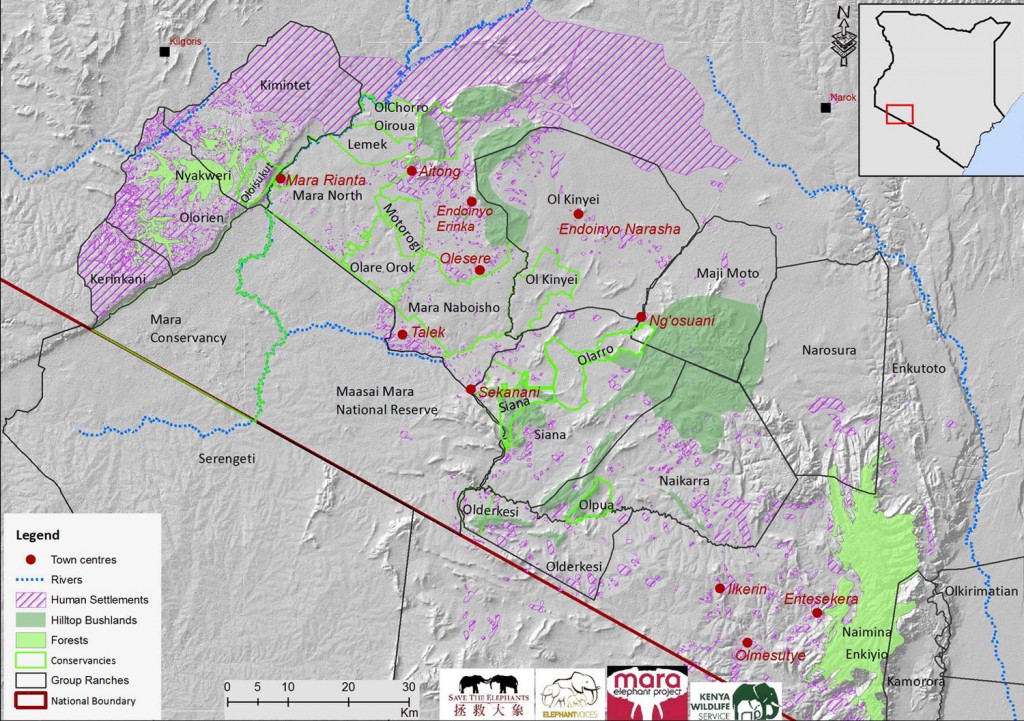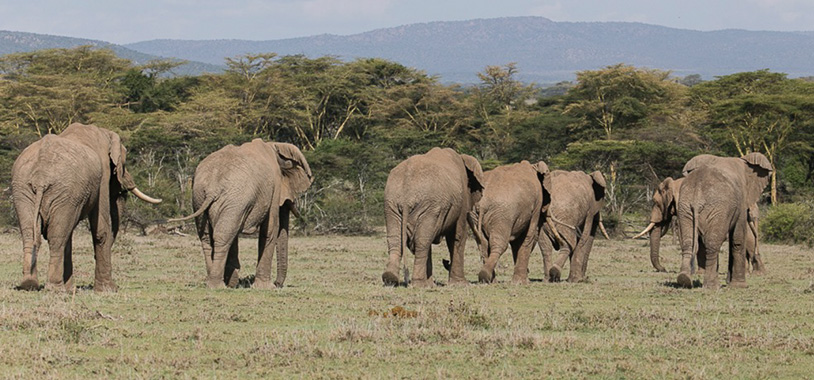Kenya’s Vision 2030 identifies securing of wildlife dispersal areas and migratory routes and pathways as significant ingredients of sustainable eco-tourism. Likewise, it is Save the Elephant’s (STE’s) conviction that the protection of wildlife habitat and corridors can help to secure Kenya’s natural resources and with them her national interests related to tourism, biodiversity, sustainable use of resources and community livelihoods.
STE is however concerned at the rate at which wildlife routes in the Maasai Mara ecosystem in the Narok County are being blocked resulting in disappearance of habitat connectivity. This will have serious ramifications on biodiversity and threaten the flow of revenue from the world-renowned Maasai Mara National Reserve. The broader implications for the Narok County are likely to be significant and clearly of detriment to human well-being.
On 6th February 2015, STE joined with ElephantVoices, Mara Elephant Project, Kenya Wildlife Service and the Maasai Mara National Reserve’s management to present to the Environment Committee of the Narok’s County Assembly our joint report. This detailed the status and movements of elephants within and beyond the Maasai Mara National Reserve and the neighboring wildlife Conservancies. We discussed recommendations for the protection of identified key wildlife routes and habitats to preserve biodiversity and reduce human-elephant conflict.
The Deputy Speaker, Hon. Joseph Tubula Otuni, agreed on behalf of the County Assembly that they will adapt the recommendations contained in our joint report, debate them and recommend to their Executive committee for incorporation into the ongoing spatial planning for Narok County.

Some priority elephant routes that take into consideration data from the satellite elephant collars, elephant signs and local knowledge on vital resources for elephants including forage, water, minerals and security

Boundaries of relevant land entities (National Reserve, current/proposed Conservancies, relevant (ex) Group Ranches, human settlement, hilltop bush lands and key forests)
However, the un-equitable sharing of revenue generated from wildlife related tourism was singled out at this meeting as the greatest obstacle to achieving a spatial planning that favors long-term wildlife conservation. This is an issue that must be tackled transparently and honestly by the leadership of Narok County and the tourism industry in collaboration with the communities living with wildlife.


